 |
 |
 |
| |
Severity of Some Multimorbidity
Clusters on the Rise in People With HIV
|
| |
| |
HIV Drug Therapy Glasgow, October 23-26, 2022
Mark Mascolini
Severity of certain multimorbidity patterns defined in people with HIV infection rose over the past 3 to 5 years, according to an analysis of 694 older-than-50 participants in the Pharmacokinetic and clinical Observations in PeoPle over fifty (POPPY) study [1]. Two multimorbidity clusters-cardiovascular disease (CVD) and mental health (MH)-had marked severity score jumps. But severity waned in a sexually transmitted diseases (STD) cluster.
Prior research documented clusters of certain comorbidities in people with HIV. For example, work by POPPY and AGEhIV cohort researchers identified STD, CVD, MH, and other clusters [2]. But POPPY investigators noted that whether comorbidity cluster patterns change over time had not been addressed before this analysis.
POPPY recruited HIV-positive people 50 or older in England and Ireland into a prospectively tracked cohort, which also includes an HIV-negative group of people 50 or older and a younger-than-50 HIV-positive group. This analysis focused only on the older HIV group.
The POPPY team used Principal Component Analysis [3] to identify multimorbidity patterns. They determined a severity score for each person and each identified pattern by factoring in the presence or absence of comorbidities and coefficients calculated by the Principal Component Analysis. A higher severity score indicates more comorbidities and greater multimorbidity severity in an individual. The investigators used linear regression adjusted from demographic and lifestyle factors to identify predictors of baseline and follow-up multimorbidity severity scores.
In 694 HIV-positive POPPY participants, median age stood at 55 years, 87% were male, 84% white, 26% current smokers, 81% current alcohol drinkers, and 17% obese. Almost everyone in the study group, 97%, was taking antiretroviral therapy, and 91% had a viral load below 50 copies. Median CD4 count stood at 628.
CVD cluster components (and correlation with that pattern) were myocardial infarction (0.71), hypertension (0.70), CABG/PCTA (0.70), angina (0.63), heart failure (0.56), peripheral vascular disease (0.48), dyslipidemia (0.42), and kidney problems (0.41). (CABG is coronary artery bypass grafting; PCTA is percutaneous transluminal coronary angioplasty.)
STD cluster conditions included gonorrhea (0.79), chlamydia (0.64), syphilis (0.63), lymphogranuloma venereum (0.63), and herpes simplex virus (0.51).
Mental Health (MH) cluster components were depression (0.70), anxiety (0.50), panic attacks (0.46), and joint inflammation/arthritis (0.41).
Median baseline severity scores (and interquartile ranges [IQR]) were 0.09 (IQR 0.00 to 1.25) for CVD, 0.27 (IQR 0.06 to 1.53) for MH, and 1.40 (0.05 to 2.88) for STD. Median severity scores through visit 3 follow-up rose from baseline for CVD (0.54, IQR 0.07 to 1.14) and MH (0.60, IQR 0.18 to 1.18) but fell for STD (0.80, IQR 0.06 to 1.64).
Diverse demographic and lifestyle factors predicted baseline (initial) multimorbidity severity scores for the three clusters:
CVD severity score
- Older age (years): coefficient 0.03, 95% confidence interval (CI) 0.03 to 0.04, P = 0.0001
- Obesity: coefficient 0.29, 95% CI 0.10 to 0.48, P = 0.003
MH severity score
- Male: coefficient -0.34, 95% CI -0.57 to -0.11, P = 0.003
- Men who have sex with men (MSM): coefficient 0.39, 95% CI 0.15 to 0.63, P = 0.002
- Obesity: coefficient 0.20, 95% CI 0.05 to 0.35, P = 0.01
- Smoking: coefficient 0.31, 95% CI 0.18 to 0.44, P = 0.0001
STD severity score
- MSM: coefficient 1.56, 95% CI 1.09 to 2.02, P = 0.0001
- Obesity: coefficient -0.32, 95% CI -0.62 to -0.03, P = 0.03
Demographic and lifestyle factors that predicted follow-up multimorbidity severity scores did not entirely overlap baseline predictors. The different follow-up predictors are underlined.
CVD severity score
- Older age (years): coefficient 0.04, 95% CI 0.03 to 0.04, P = 0.0001
- White ethnicity: coefficient -0.54, 95% CI -0.84 to -0.23, P = 0.001
- Obesity: coefficient 0.36, 95% CI 0.16 to 0.55, P = 0.0001
MH severity score
- Male: coefficient -0.56, 95% CI -0.82 to -0.30, P = 0.0001
- White ethnicity: coefficient 0.29, 95% CI 0.03 to 0.55, P = 0.03
- MSM: coefficient 0.41, 95% CI 0.17 to 0.65, P = 0.001
- Smoking: coefficient 0.21, 95% CI 0.06 to 0.35, P = 0.004
STD severity score
- Older age (years): coefficient 0.01, 95% CI -0.02 to 0.02, P = 0.03
- MSM: coefficient 1.52, 95% CI 1.06 to 1.97, P = 0.0001
The POPPY team cautioned that they relied on self-reported data, which could result in underreporting or overreporting. And the study group was largely white and male, so findings may not apply to other groups with HIV.
References
1. Sukumaran L, Mallon PWG, Post FA, et al. The stability and predictors of change in clinically relevant multimorbidity clusters over time among people with HIV in the Pharmacokinetic and clinical Observations in PeoPle over fifty (POPPY) study. HIV Drug Therapy Glasgow, October 23-26, 2022.
2. De Francesco D, Verboeket SO, Underwood J, et al. Patterns of co-occurring comorbidities in people living with HIV. Open Forum Infect Dis. 2018;5:ofy272. doi: 10.1093/ofid/ofy272. https://academic.oup.com/ofid/article/5/11/ofy272/5144106
3. Jaadi Z. A Step-by-Step Explanation of Principal Component Analysis (PCA). https://builtin.com/data-science/step-step-explanation-principal-component-analysis
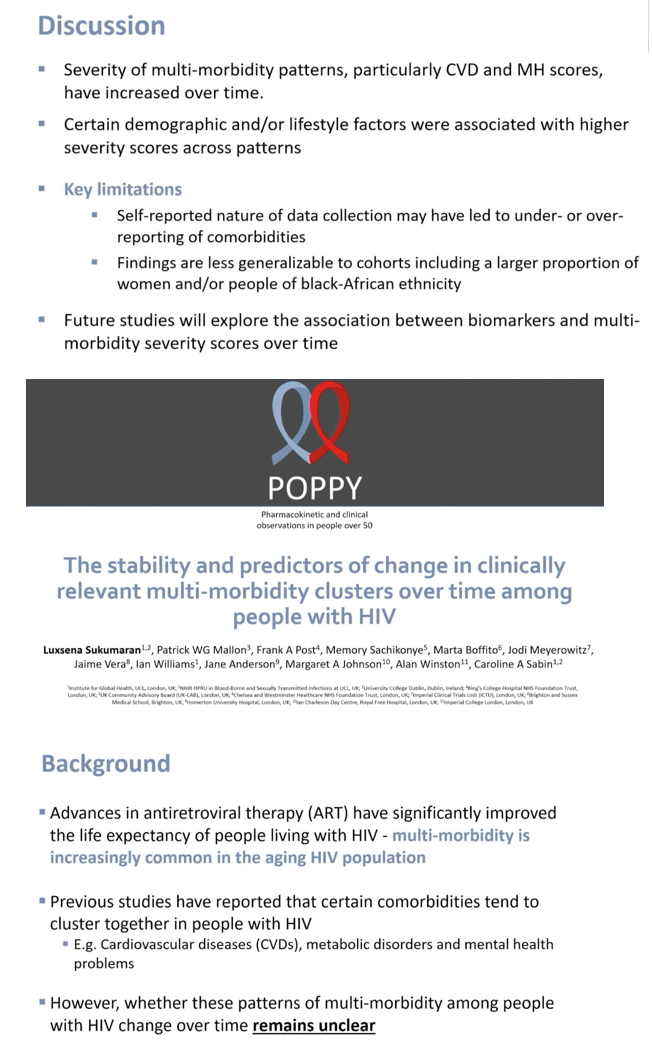
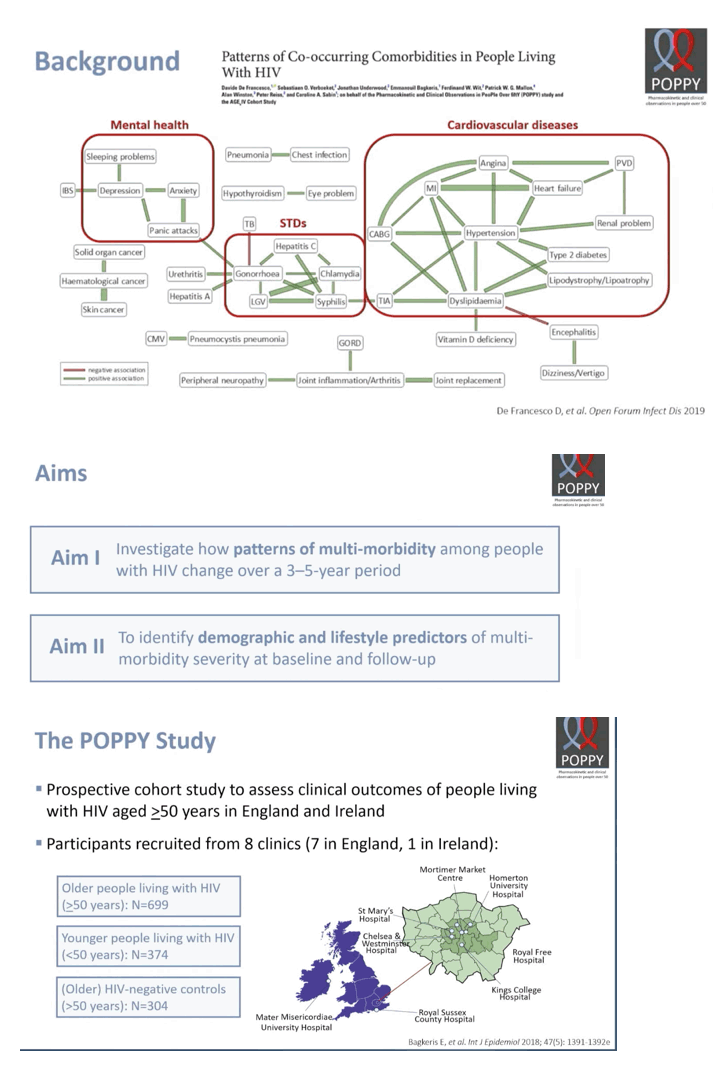
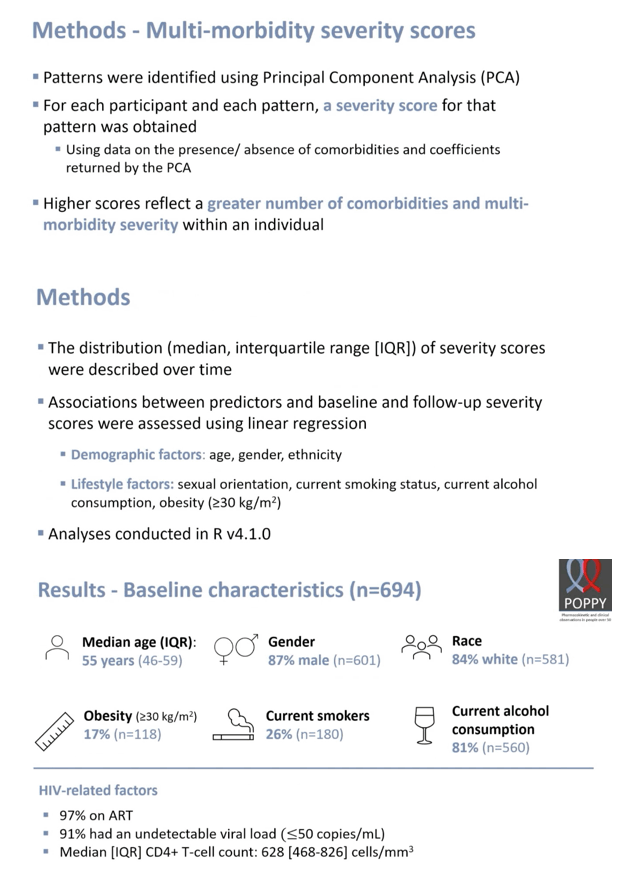

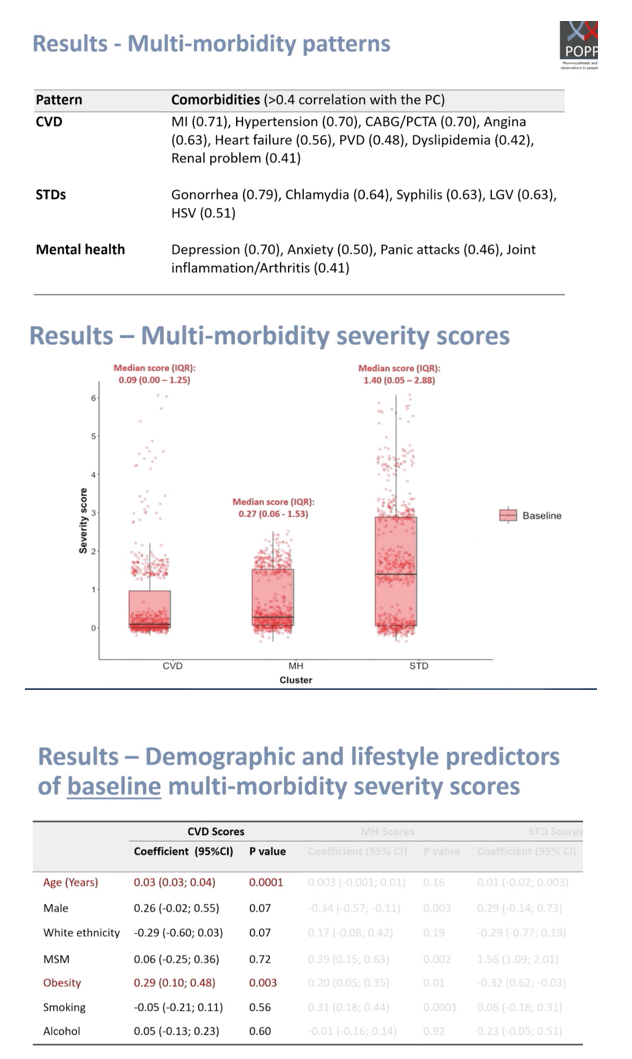
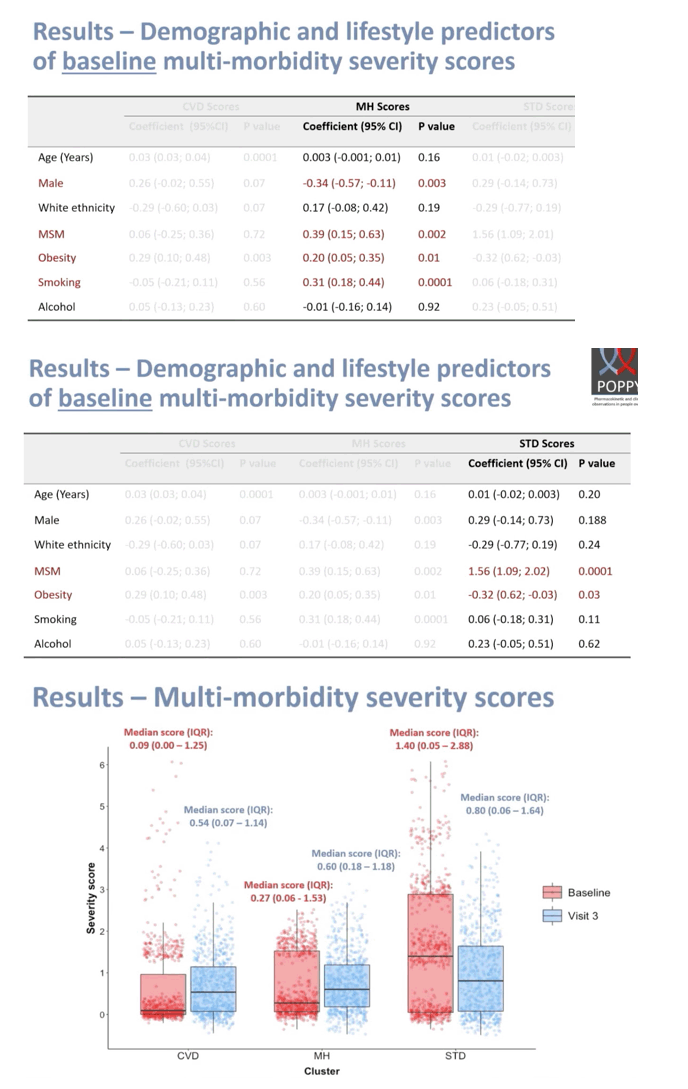
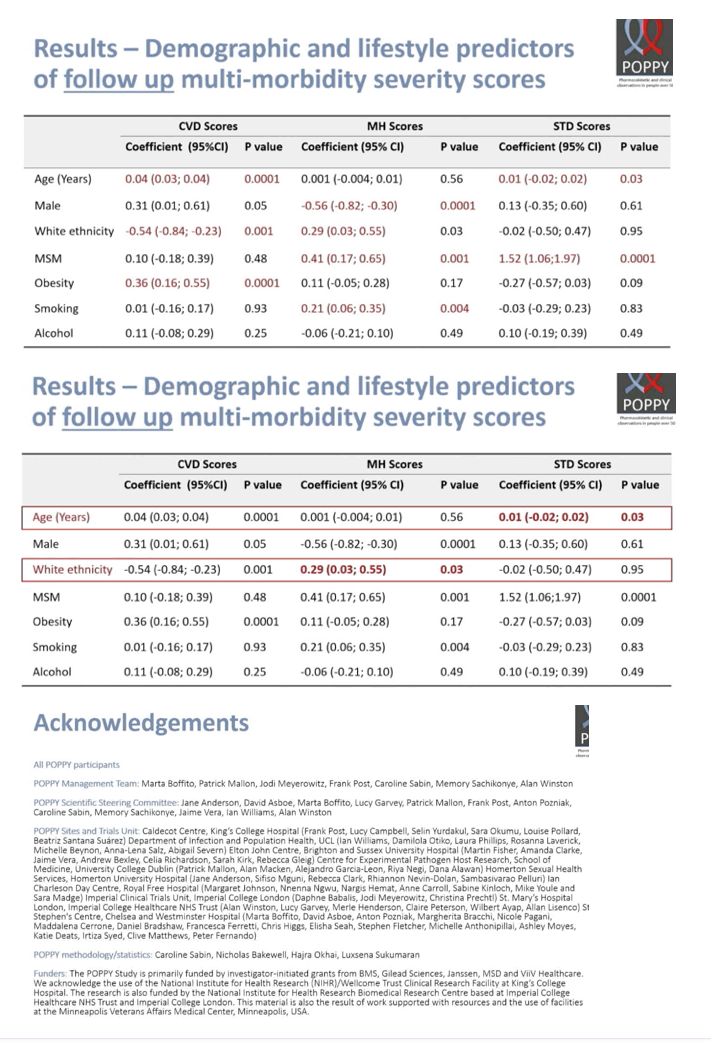
|
| |
|
 |
 |
|
|